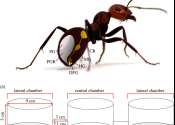Arctic 'shorefast' sea ice threatened by climate change, study finds
For people who live in the Arctic, sea ice that forms along shorelines is a vital resource that connects isolated communities and provides access to hunting and fishing grounds. A new study by Brown University researchers ...









